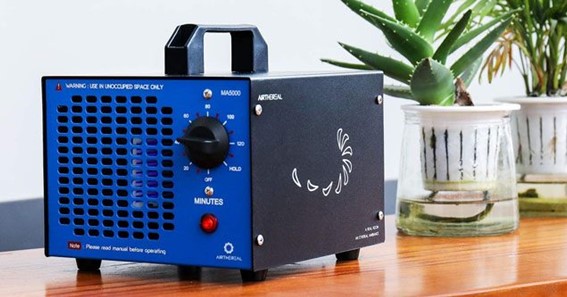As clean air and water are becoming a mandatory obligation amid the breakout of air and waterborne infections, technology is also valuable in helping find reliable and safe ways to filter and keep clean air. And one of the ways is the introduction of ozone generators. An ozone generator produces ozone gas, which helps purify the air. At the same time, the generator also purifies water.
But still, because the coming and even the use of these generators is new to most people, understanding how they work is the first thing you need to do. And to know how the generator operates, you can get started if you shop for ozone generator for home use first. And to understand more, let’s find out everything about the workings and types of these generators.
How an Ozone Generator Purifies the Air
As air circulates, it’s prone to unavoidable and unnoticed contamination. When the air hits molecules such as smoke or mold, the ozone generator helps purify it by working on its oxygen molecules. For instance, when unclean molecules affect the air, oxygen molecules attach themselves to the contaminating agent molecules, ultimately eliminating them.
Through the process, ozone stands by the oxygen molecule presentation of O3. This molecule is the one that attaches itself to contaminants like bacteria, germs, fungus, and even odors. As a result, contaminants get destroyed through their membrane cell walls. So, as the O3 molecules float through the air, they spot contaminates. When a contaminating agent gets destroyed, the air remains with two molecules that automatically turn into oxygen (O2). Through this process, oxidation and microscopic explosions also happen.
When these processes occur, the contaminants and their broken atoms get destroyed. As a result, you remain with two safe atoms of oxygen. And again, the microscopic explosion changes the dead and destroyed contaminants into carbon and hydrogen, which are safe to breathe in or left to circulate within the surroundings.
How the Generator Eliminates Odors
Because ozone is highly reactive, its reaction with contaminates and allergens renders them harmless and removes odors. Ozon breaks down the chemical bonds of mold, bacteria, and other contaminants that cause a stink. As a result, the contaminants become oxidized, less toxic, and unable to smell as bad as before.
Also, ozone removes odors because bacteria and other elements are reduced in number when it oxidizes them. As a result, reducing the number of contaminants also diminishes excretion, which is the leading cause of odors.
How the Generator Purifies Water
Unlike when an ozone generator purifies the air, the method it purifies water is known as ozone water treatment. And it’s a process by which ozone reduces contaminants through oxidation. Naturally, ozone itself is an oxidant, and because of this, its reaction with other substances mixes with their electrons. For example, when the ozone reacts with metals, they become oxidized and rust. So, the ozone water treatment starts by creating ozone gas within the generator.
Then, the gas gets into the water and immediately begins to oxidize. When this happens, water contaminants are eliminated. And as oxidation occurs, any contaminant’s organic materials and membranes weaken and rupture. In the end, their cells also die. The ozone again filters the water through mechanical filtration inserted as active carbon filters within the generator. This way, the collected and preserved water is clean and safe.
The Types of Ozone Generators and How They Work
Naturally, you will come across many different types of ozone generators, and it can be challenging to determine which one you need. As a result, let’s also look at some of the models you should know.
Ultraviolet Generators
An ultraviolet ozone generator helps remove odors from space, as the name suggests. The generator has electrostatic filters and blowers for moving air through, and its ozone-producing ultraviolet component consists of germicidal lighting bulbs. These bulbs help sanitize the air through the generator into circulation. As the air passes through, ozone is also released into space to eliminate elements that cause odors.
Corona Discharge Generators
Unlike other ozone generators, a corona discharge generator works by simulating lighting. For example, when lighting comes into contact with the air within space, the generator connects or attaches its power to the electronic splitting charge that sometimes splits due to lighting. As a result, molecules of oxygen then divide into atoms. At the same time, as these atoms bond into two, the generator then enables them to combine with a free atom to make them O3. In the end, you get ozone, which then purifies water and air.







